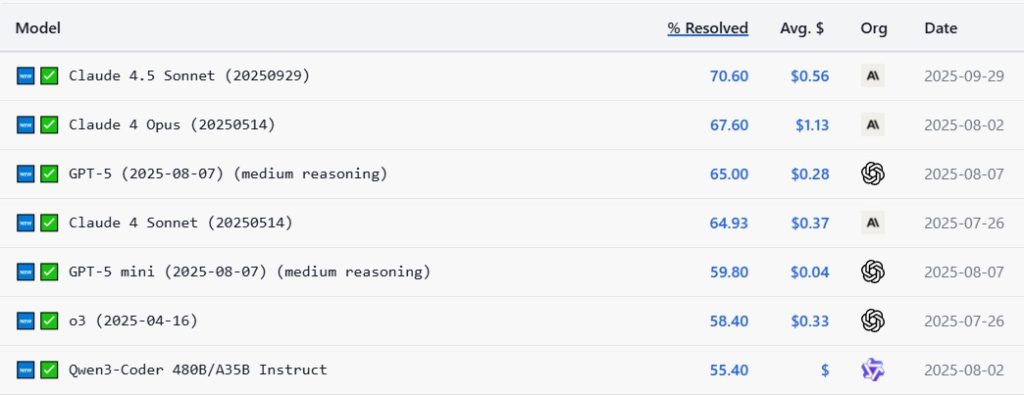The world of AI-powered code agents is experiencing an electrifying moment, as discussed in the recent analysis “How Generative AI Is Accelerating Web Modernization.” While Anthropic’s Claude Sonnet 4.5 was until recently the unsung hero breaking records in reasoning and accuracy, it now has a fresh, fast, and very bold challenger: Composer 1, Cursor’s first proprietary LLM model, which has just been released (October 2025).
We are witnessing how these two giants, each with a distinct superpower, are not only helping us write code but are completely redefining our experience as developers of modern web platforms.
Recent History: The Heavyweight Champion and the Speedy Debutant
Claude Sonnet 4.5: The Wise and Meticulous

Anthropic, the company known for its commitment to AI safety, has been training and evolving its Claude LLM model family at a rapid pace. Claude Sonnet 4.5, released in September 2025, is currently considered one of the most accurate AI tools for complex tasks.
What makes Sonnet so great? Think of it as an extremely intelligent senior consultant. Its achievements are impressive, topping benchmarks like SWE-bench Verified (programming tests that simulate real-world bugs). It’s not just a good programmer; it’s a deep reasoning expert capable of working autonomously for over 30 hours. If you have a stubborn bug in code that no one understands, you call Sonnet without hesitation.

Composer 1: Cursor’s Ace in the Hole
The release of Composer 1 in October 2025 by the Cursor team is a statement of intent. After basing their popular IDE on third-party models, they decided to build their own secret weapon.
What makes this release special? Composer 1 was designed with a single goal: to be incredibly fast and efficient. Using a cutting-edge architecture (think of a Mixture of Experts fine-tuned for developers), Cursor achieved a model that they claim is significantly cheaper in terms of tokens and up to four times faster at executing coding tasks. It’s the perfect engine for a software agent workflow.
Comparison: Speed (Composer 1) or Wisdom (Claude Sonet 4.5)?
| Feature | Claude 4.5 Sonnet (Anthropic) | Composer 1 (Cursor) |
|---|---|---|
| Mental Role | Architect, Code Reviewer, Puzzle Solver. | Agile Implementer, Boilerplate Generator, Instant Fixer. |
| Superpower | Superior reasoning and the ability to maintain long-term autonomous thought. | Speed and cost-efficient code generation. |
| When to use it? | For refactoring large modules, fixing bugs in legacy code, and complex system design. | For generating mocks, writing unit tests, and quickly implementing simple features. |
The strategic advantage of this approach is that it doesn’t force you to choose between models. Instead, we can leverage the unique strengths of each to address the two major limitations of development: slowness and complexity.
- Goodbye to Boring and Repetitive Code (Thanks, Composer 1)
Who enjoys writing the same routing configurations, state hooks, or database schemas over and over again? Nobody.
Composer 1 eliminates this tedium. Its hyper-speed means that boilerplate code is generated in a flash. This allows developers to focus on business logic, not syntax.
- Peace of Mind in Complexity (Thanks, Claude Sonnet 4.5)
The development of modern web platforms has, in many cases, resulted in systems of immense complexity: multiple stacks coexisting and vast interconnected components. These “monsters” are difficult to refactor and consume a considerable amount of time analyzing and fixing bugs. When something breaks, the bug can be hidden anywhere in the distributed architecture.
This is where Claude Sonnet 4.5 comes in, like a superhero, to save the day.

Its deep reasoning capabilities allow it to analyze massive codebases and identify the root cause of a problem. It’s like having a seasoned Ultra Instinct-level programmer reviewing your code for security vulnerabilities and optimizations.
My Personal Experience: I’ve been working with Claude Sonnet 4.5 for some time now, and the results have been genuinely rewarding. We’ve defined a very clear architecture and specific coding rules for each project. By feeding the AI agent these detailed contexts (how the file structure should be, which design pattern to use, which conventions to follow), the model perfectly understands the project’s “style.” This has resulted in code generation that is not only functional but also adheres to our best practices from the outset. This “think before you ask” approach has made collaborating with the AI incredibly smooth, and the generated code requires minimal tweaking.
The future is AI-AI collaboration.

The arrival of Composer 1, despite its recent release, promises to change the dynamics. For now, I’m still exploring its capabilities, as it’s too new to draw firm conclusions.
However, the ideal scenario is clear:
The developer defines the rules.
Composer 1 (the muscle) takes a task and executes it quickly.
Claude Sonnet 4.5 (the brain) reviews the code to ensure it’s clean and adheres to the predefined architecture.
Both models are transforming our development experience, allowing us to create web platforms faster, more securely, and with far less frustration. The efficiency of Composer 1 and the wisdom of Claude Sonnet 4.5 are elevating what we can achieve every day.
Reference sources:
- Anthropic launches Claude Sonnet 4.5, its best AI model for coding.
- Composer: A Fast New AI Coding Model by Cursor
Other publications that may be of interest to you:
How Generative AI is Accelerating Web Modernization
Design Principles of a Secure API
